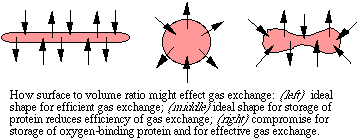
Home
Studies
& Data Analysis
Methods
Microscope studies
Flagella experiment
Laboratory math
Blood fractionation
Gel electrophoresis
Protein gel analysis
Mitochondria
Concepts/ theory
Keeping a lab notebook
Writing research papers
Dimensions & units
Using figures (graphs)
Examples of graphs
Experimental error
Representing error
Applying statistics
Principles of microscopy
Solutions & dilutions
Protein assays
Spectrophotometry
Fractionation & centrifugation
Radioisotopes and detection
Guide to the study
Lab part 1
Lab part 2
Lab part 3
Selected methods
Components of Mammalian Blood
Blood, by definition, is a tissue. It meets all of the requirements for connective tissue, consisting of different cell types within an extracellular matrix, that function together. Granted, it is a unique tissue, and since the extracellular matrix is a liquid it is the easiest tissue from which to isolate components.
Blood consists of a liquid component, the plasma, and formed elements, as we call the solid components. Inorganic components of plasma include the major electrolytes sodium, chloride, and potassium ions, among which the salt, sodium chloride, is predominant. Plasma also contains soluble proteins, the most abundant of which is serum albumin. The primary purpose of albumin is to transport fatty acids, which are not terribly soluble in an aqueous environment by themselves. Albumin also serves to transport lipid-soluble hormones such as steroids. Another major component is carbonic anhydrase, which catalyzes the conversion of dissolved carbon dioxide to bicarbonate anion and back. Carbonic anhydrase is essential toward maintainig the pH of blood and extracellular fluids within physiological limits. Other plasma proteins of interest include immunoglobulins, fibrinogen, and clotting factors.
The term serum refers to the liquid component of clotted blood. Serum differs from plasma in that it lacks the formed elements and the clotting factors, but retains the electrolytes and soluble proteins, including antibodies.
The formed elements are all cells or parts of cells. Aside from platelets, the red blood cell is the most abundant of the formed elements, and for good reason. Blood performs a remarkable number of functions, including maintenance of extracellular pH and electrolyte balance, delivery of fatty acids and other nutrients to the tissues, delivery of toxic compounds and waste products to the liver and kidneys, and it serves as the primary vehicle for hormone delivery and immune responses. Above all, the primary, immediate, moment to moment function of blood is to deliver oxygen to the tissues.
Platelets are fragments of larger cells that are ruptured before entering the bloodstream. They provide the bulk of material for formation of blood clots. White blood cells, or leukocytes, mediate immune responses, and are readily seen in Wright's stained blood smears although they are much less abundant than red cells in blood samples from healthy individuals.
The mature mammalian red blood cell has no nucleus or cytoplasmic organelles and very little enzyme activity. It is designed for a specific purpose, that is to enclose a large quantity of the oxygen-binding protein hemoglobin in a package that allows travel through tortuous routes in the circulation, and efficient gas exchange at the same time.

The biconcave disk shape of the red blood cell accomplishes both purposes. In fact, the cell is capable of stacking in a 'rouleaux' formation within capillaries that are no larger in diameter than the diameter of the erythrocyte itself. It is also capable of deformation as it is driven through valves of the heart or encounters turbulence in the chambers and major arteries. The integrity of the cell is maintained throughout its typical lifetime in humans of three months, despite many passes through the circulation. That integrity and the biconcave shape itself are maintained by a complex network of proteins that interact with the cell membrane in a special way. The network that gives the erythrocyte its special flexibility is called the cytoskeleton.
Visitors: to ensure that your message is not mistaken for SPAM, please include the acronym "Bios211" in the subject line of e-mail communications
Created by David R. Caprette (caprette@rice.edu), Rice University 14 Aug 96
Updated 30 Jul 12
